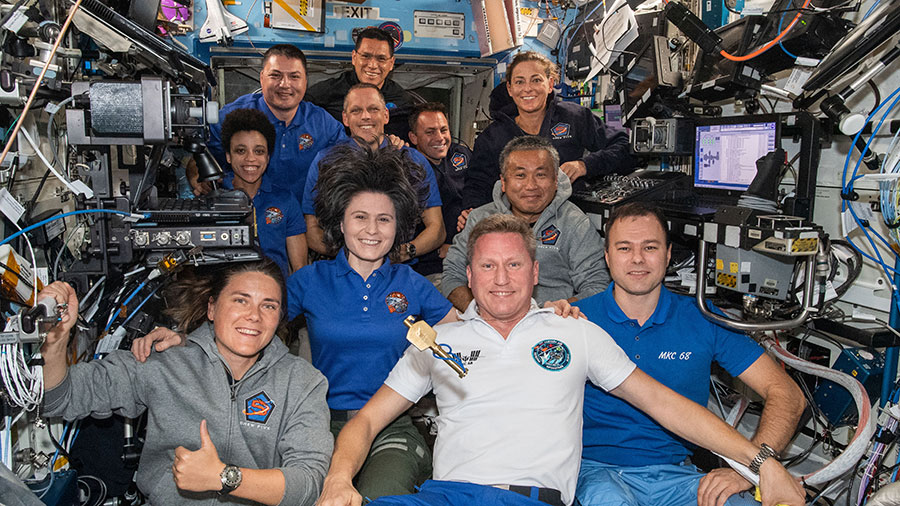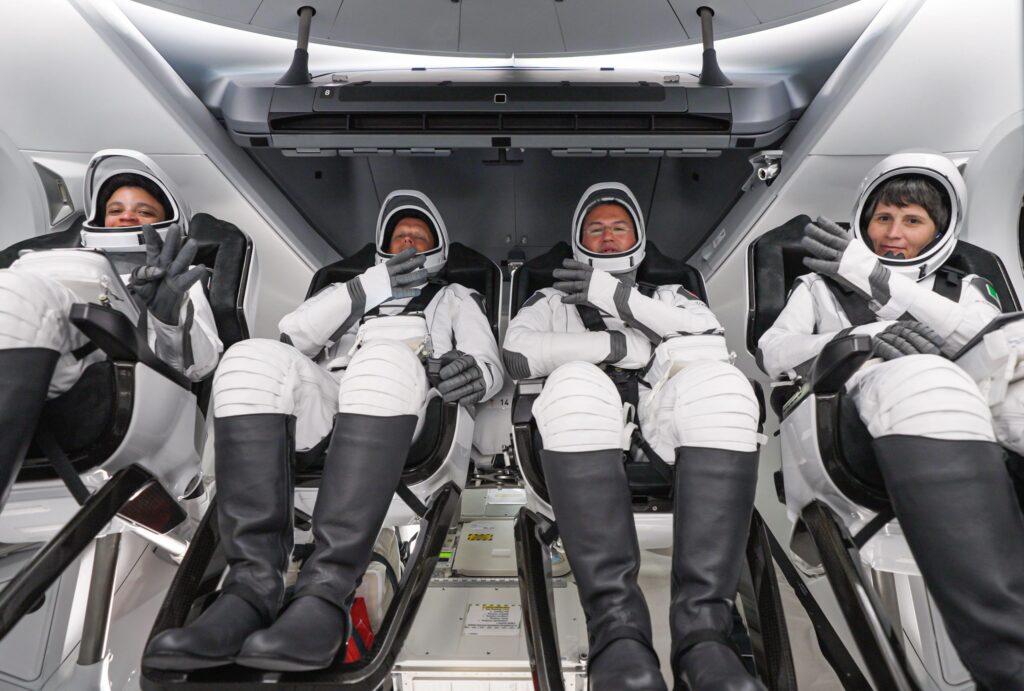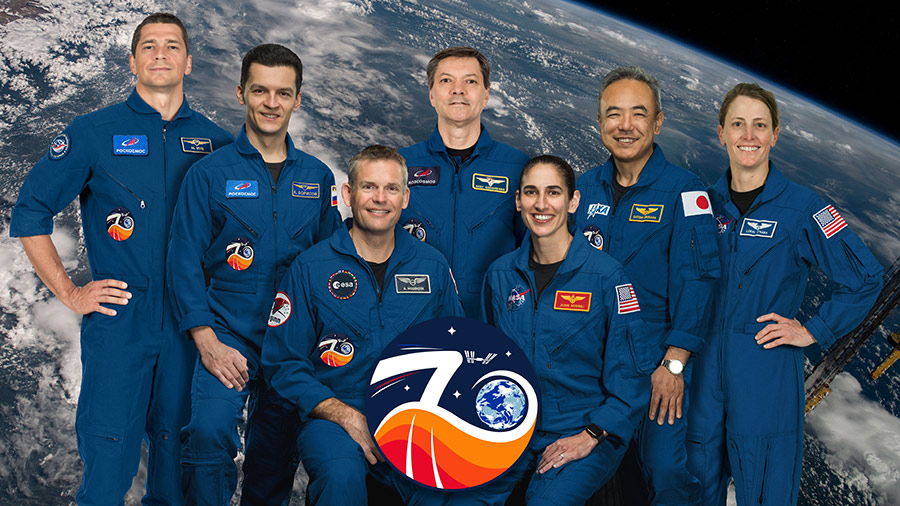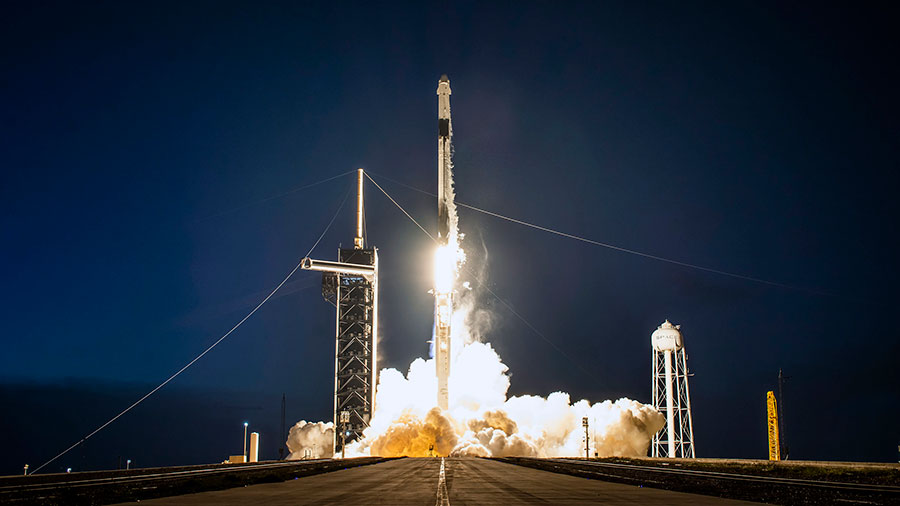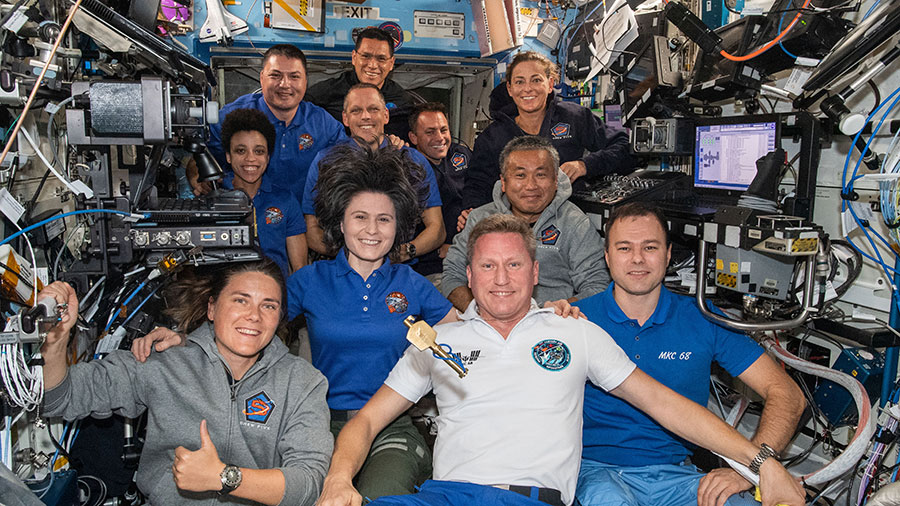
Today aboard the International Space Station, the Expedition 68 crew explored how to maintain healthy bodies and grow crops in the weightless environment of space. Learning to live long-term in microgravity and farther away from Earth orbit requires astronauts to sustain themselves without relying on visiting resupply missions.
Humans lose muscle and bone mass much faster in space than on Earth due to the lack of gravity bearing down on them. However, the space station crew members work out two hours every day on a treadmill, an exercise cycle, and a resistive device, to offset and counteract the effects microgravity. One experiment called Myotones, worked on today by U.S. and Japanese Flight Engineers Nicole Mann and Koichi Wakata, tracks how a crew member’s muscles adapt to space. The duo took turns marking their neck, back, leg and arm muscles, while inside the Columbus laboratory module. Afterward, the pair used the specialized Myotones device to measure the biochemical properties of the same muscles, including muscle tone, stiffness, and elasticity.
Mann then went on and partnered with fellow NASA Flight Engineer Josh Cassada strapping sensors to each other and pedaling on the U.S. Destiny laboratory module’s exercise bike to measure their aerobic capacity on orbit. Frank Rubio, also a NASA flight engineer, mixed a nutrient solution to nourish vegetables growing inside the Columbus lab for the XROOTS study. The space botany study investigates using hydronic and aeroponic methods to grow crops on spacecraft and space habitats so astronauts can feed themselves in low-Earth orbit and beyond.
Roscosmos Flight Engineer Anna Kikina studied advanced Earth photography techniques that use ultrasound sensors to help target landmarks on the ground. Her fellow cosmonauts, Commander Sergey Prokopyev and Flight Engineer Dmitri Petelin, are preparing for a new cargo mission due to launch from Kazakhstan at the end of the month. The duo tested the station’s TORU, or telerobotically operated rendezvous unit, that would be used to manually control an approaching spacecraft in the unlikely event it was unable to automatically approach and dock on its own.
Learn more about station activities by following the space station blog, @space_station and @ISS_Research on Twitter, as well as the ISS Facebook and ISS Instagram accounts.
Get weekly video highlights at: http://jscfeatures.jsc.nasa.gov/videoupdate/
Get the latest from NASA delivered every week. Subscribe here: www.nasa.gov/subscribe

